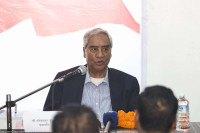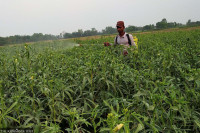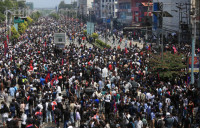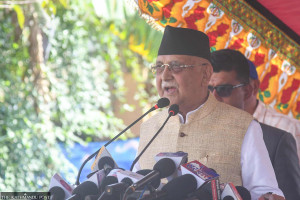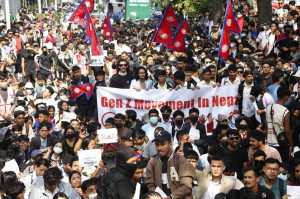Opinion
The silent killer
More people die of hepatitis each year than malaria, dengue and HIV/AIDS combined
Poonam Khetrapal Singh
Viral hepatitis kills nearly 4,000 people every day and close to 1.5 million people every year worldwide. Globally, one in 12 people are infected with viral hepatitis.There could be millions more with viral hepatitis as it can persist undetected for many years before giving rise to symptoms and can lead to chronic liver damage, cirrhosis, liver cancer and death.
Rampant in the region
In the World Health Organisation (WHO) South-East Asia Region—Bangladesh, Bhutan, Democratic People’s Republic of Korea, India, Indonesia, Maldives, Myanmar, Nepal, Sri Lanka, Thailand, Timor-Leste—this life threatening disease claims around half a million lives each year that is more than malaria, dengue and HIV/AIDS related deaths combined. There are 100 million people living with chronic hepatitis B and 30 million people living with chronic hepatitis C. Almost three-quarter of these are unaware of their infection status. Additionally, many children and adults suffer from hepatitis A. Pregnant women in the region are vulnerable to hepatitis E infection that is life-threatening in pregnancy.
While hepatitis A and E are transmitted through the faeco-oral route, ie, consumption of contaminated food and water, hepatitis B and C are transmitted through contact with infected blood through unsafe injections, medical procedures, blood transfusion, shaving blades, tattoos and piercing instruments and from an infected pregnant mother to her unborn child.
Search for cure
All forms of hepatitis can cause serious complications—some more than others, depending on the baseline health status of the individual. It is important to be aware and act early to prevent these infections, disability and deaths. It is important to ensure injection and blood safety, adequate hygiene and proper sanitation, vaccination for hepatitis A and B. Get yourself tested for hepatitis B and C especially if you are vulnerable—e.g. in high risk professions, requiring frequent blood transfusions, unvaccinated for hepatitis B, receiving frequent injections, etc. While there is no vaccine for hepatitis C yet, early diagnosis and treatment can prevent chronic liver damage, cirrhosis, liver cancer and reduce the risk of death.
Even though this disease has been around for quite some time, the policy and programme response has been lukewarm at best. Lack of reliable information on the extent of infection, disease, disability and death due to viral hepatitis could be responsible for the relative isolation of this disease. Also compounding the problem is the fact that it may take years before the signs and symptoms of the disease manifest especially for hepatitis B and C. Unlike HIV, hepatitis does not have vocal community voices demanding right to diagnosis and treatment. Treatment choices too have been limited. We have had treatment for chronic hepatitis B infection for some time and we now have a cure for hepatitis C. Towards the end of 2013, when the US Food and Drug Administration approved the directly acting anti-viral drugs that could cure hepatitis C, it was revolutionary. However, the astronomical price of drugs dampened the excitement. Relentless advocacy and concerted action especially on price negotiation have already resulted in reduction of prices by 90 percent for low and low-middle income countries. Further reductions with the availability of generics will happen in the not so distant future. It will be a treatment revolution for hepatitis C and only then we can dream of eliminating this dreaded disease.
Vaccines as cure
Vaccination is one of the best things to happen for public health. Hepatitis B vaccine is effective. It is part of the routine immunisation schedule for children in all countries. Additionally, the WHO recommends giving hepatitis B vaccination to all newborns within first 24 hours of birth. This simple and cost effective strategy will give us a generation free of hepatitis B. Ideally, all children and adults who have not been vaccinated against hepatitis B should get tested and if not yet infected, should take the three doses of the vaccine. This is especially true for those at higher risk like healthcare workers and those needing frequent blood transfusions or dialysis. People who frequently inject and men who have sex with men are also at increased risk and should get tested and vaccinated.
The other pillar of prevention is avoiding risks—minimise use of injections, insist on safety of medical procedures, avoid tattoos, should you need, only use safe blood for transfusion. When in doubt, get tested.
This year’s theme for World Hepatitis Day (July 28) is ‘Prevent hepatitis. Act now.’ This day was chosen to commemorate the birthday of Nobel Laureate Professor Baruch Samuel Blumberg, who discovered the hepatitis B virus and developed the first hepatitis B vaccine. The global focus this year will be on prevention for hepatitis B and C; we have vaccine and treatment for hepatitis B and cure for hepatitis C. Combating hepatitis is one of the indicators for the post 2015 health and development agenda. We can be ambitious and aim to eliminate hepatitis B and C—together, we can do it.
Khetrapal Singh, Regional Director, WHO South-East Asia Region




 26.12°C Kathmandu
26.12°C Kathmandu
